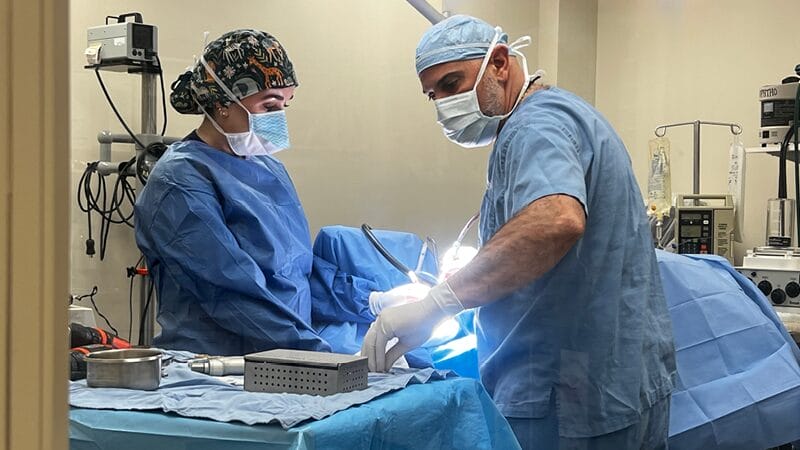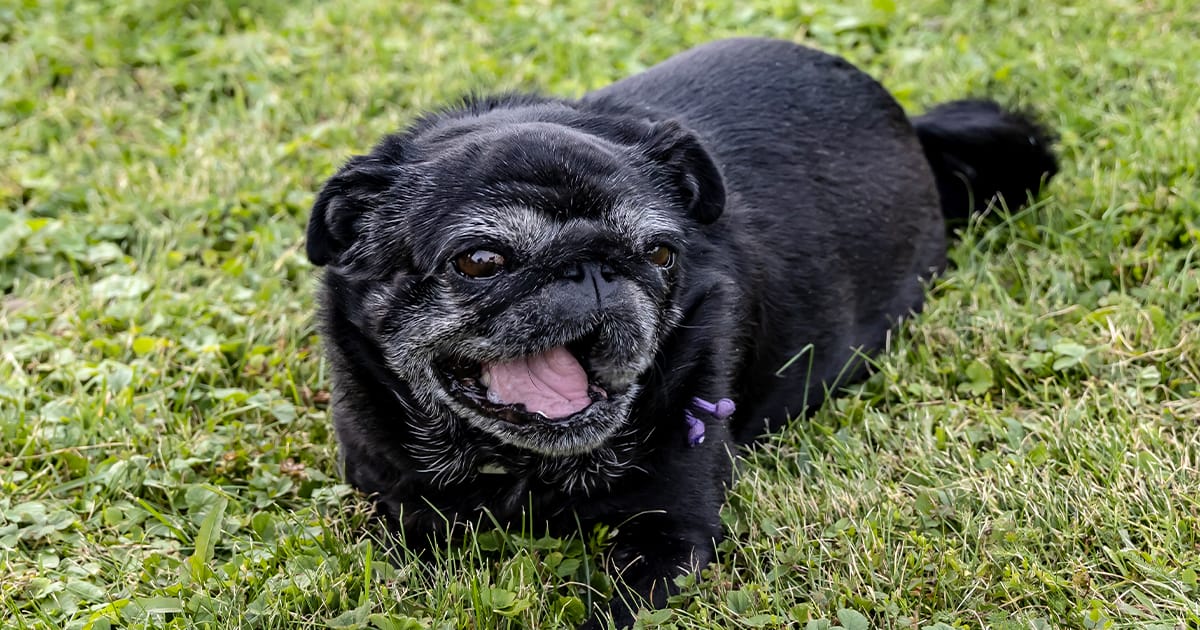Gastrointestinal Foreign Bodies in Cats and Dogs: Signs, Treatment, and Prevention
Cats and dogs often swallow foreign objects that can get stuck in their GI tract, requiring veterinary care.
Gastrointestinal blockages in pets are a serious and potentially life-threatening issue that can arise when dogs or cats ingest foreign objects. These blockages can occur anywhere along the digestive tract, from the esophagus to the intestines, and can lead to severe complications if not addressed promptly. Understanding the risks, signs, and treatment options for gastrointestinal blockages is important for pet owners to ensure their pets remain healthy and safe.
The Anatomy of the Gastrointestinal Tract in Cats and Dogs
When a pet eats, the food travels down the esophagus and into the stomach, where it is broken down and digested. From there, the partially digested food moves into the small intestines, where nutrients are absorbed, and then into the colon and rectum, where waste is formed and eventually expelled through the anus. This process can be visualized as a garden hose, with the food moving smoothly from one end to the other. However, when a foreign object is ingested, it can disrupt this flow, leading to blockages and other complications.

Common Foreign Objects Cats and Dogs Eat
Cats and dogs have different preferences when it comes to foreign objects. Cats are particularly fond of string and ribbon, which can cause linear foreign body obstructions. These linear objects can anchor at one end, often under the tongue, while the other end continues to travel through the intestines. This can cause the intestines to pleat like an accordion, leading to perforation and severe internal damage and septic peritonitis. Long-haired cats are also prone to hairball obstructions, which can be equally problematic.
Dogs, on the other hand, are less picky and will eat almost anything. Common foreign objects found in dogs include socks, underwear, toys, bones, and even more unusual items like knives. Corn cobs are an especially common foreign body that obstructs dogs. These non-linear objects can get stuck in the small intestines, blocking the flow of ingesta. This blockage can cause the intestines to dilate, much like stepping on a garden hose, and can lead to punctures or bursts, resulting in septic peritonitis—a deadly condition.
Signs of Foreign Objects in Pets
The signs that a pet may have ingested a foreign object can vary depending on the location and severity of the obstruction. Common signs include vomiting, loss of appetite, nausea, diarrhea, abdominal pain, and lethargy. These signs can be subtle or severe, and they can worsen over time if the blockage is not addressed. If the blockage is in the esophagus or stomach, the pet may regurgitate or vomit frequently, and the vomit may contain foreign objects or undigested food. If the blockage is in the intestines, the pet may experience more severe signs, such as dehydration, shock, and a distended abdomen in addition to vomiting. They also typically have abdominal pain when they are palpated.
"Gastrointestinal blockages in pets are a serious concern that can have deadly consequences if not addressed promptly."
– Karl C. Maritato, DVM, DACVS (Small Animal)
Diagnosis of Foreign Objects in Pets
If you suspect your pet has ingested a foreign object, it is essential to contact your veterinarian immediately. Your veterinarian will likely perform a physical examination. Abdominal palpation is a key part of the diagnosis, but advanced diagnostics like abdominal radiographs (X-rays) are often needed to confirm the presence of an obstruction. X-rays may show fluid and gas buildup, which are signs of a foreign body obstruction. If X-rays are inconclusive, an abdominal ultrasound may be used to further investigate the cause of the signs.

Treatment Options for Foreign Objects in Pets
Endoscopy
If the foreign object is in the esophagus or stomach and is not too large or dangerous, your veterinarian may opt for endoscopy. This minimally invasive procedure involves using a long, flexible camera to locate and remove the object. Endoscopy is preferred over surgery because it is less traumatic and has a lower risk of complications and is most commonly performed for esophageal and gastric foreign bodies. If the object is in the intestines, endoscopy is rarely successful.
Surgical Interventions
If endoscopy is not possible, surgery is likely necessary. The type of surgery depends on the location of the foreign object. If the object is in the stomach, a gastrotomy may be performed by a veterinary surgeon. This involves making an incision in the stomach to remove the object. The stomach is a better-healing organ than the small intestine, so the risk of complications is lower. If the object is in the intestines, an enterotomy may be required. This involves making an incision in the intestines to remove the object. In severe cases, where the intestines have been irreversibly damaged, resection and anastomosis may be necessary. This involves removing the damaged section of the intestines and reconnecting the healthy ends. In all the above locations, it is sometimes possible to get the object into the stomach by manipulating it manually from within the abdomen and then passing endoscopic grabbers into the stomach from the mouth to pull the object out of the stomach. This is a great technique because it has no risk of gastrointestinal tract incision healing issues and was developed and published in veterinary literature by MedVet Surgeons.
When is Surgery Necessary for Foreign Objects in Pets?
Surgery is necessary when the foreign body is too large or sharp to be removed endoscopically, or if it has caused significant damage to the GI tract. If the object is causing complete blockage, leading to severe signs like vomiting, dehydration, and shock, surgery is often the only option. Additionally, if the object has been in the GI tract for an extended period, the risk of complications such as perforation and septic peritonitis increases, making surgery essential.

Risks of Surgery
The most serious risk of surgery to remove foreign objects from pets is that the intestines could leak from the site of removal, which can cause a severe infection in the abdomen. The historically reported risk of intestinal leakage is 5-15%, and it is the highest three to five days after surgery. Recently, MedVet Surgeons published risk rates as low as 3%. Other potential complications include skin infections, incision openings, general anesthesia risks, and suture breakage if the pet is too active during the healing period. It is imperative to follow the veterinary surgeon’s post-operative care instructions to minimize these risks.
Post-Surgical Care
After surgery, your pet will typically spend one to two days in the hospital to ensure they are recovering well. When your pet returns home, your pet will likely need two weeks of confinement and rest to allow the incision to heal properly. Additionally, your pet should wear an E-collar for two weeks to prevent them from licking or biting the incision site, which can lead to infection or dehiscence (the opening of the incision).
Most pets start to feel better quickly after the foreign body is removed due to pressure relief and the re-establishment of flow within the GI tract. However, the GI tract may be inflamed and irritated, leading to persistent nausea, loss of appetite, and regurgitation of food or fluid for a few days after surgery. Therefore, your pet might not eat well and feel nauseous for a few days. It’s also common for them not to defecate for up to a week following the surgery. It’s important to ensure your pet is rehydrated and has normal electrolyte levels during recovery. Our blog post on what to expect for your pet post-surgery provides more information.
Tips for Preventing Your Pet from Swallowing a Foreign Object
Preventing your pet from ingesting foreign objects is the best way to avoid gastrointestinal blockages. Here are some practical tips to help keep your pets safe:
- Behavioral Training: Discuss proper behavioral training with your veterinarian. Training your pet to avoid certain objects can reduce the risk of ingestion.
- Responsible Housekeeping: Ensure that everyone in the household is responsible for their belongings. Keep items like socks, underwear, and string-like objects out of reach, especially if you have cats. These items are among the most common foreign objects removed from pets.
- Supervision: Be conscious of where your pet is and what they have access to. Prevent them from getting into the garbage, onto counters, or into areas where they might find tempting but dangerous objects.
- Repeat Offenders: Some pets are repeat offenders and may require additional measures, such as a basket muzzle, to prevent them from ingesting foreign objects. It’s important to note that pets do not learn from their mistakes, so it’s important to keep objects out of reach.
Gastrointestinal blockages in pets are a serious concern that can have deadly consequences if not addressed promptly. By understanding the risks, recognizing the signs, and taking preventive measures, pet owners can help keep their feline and canine companions safe and healthy. If you suspect your pet has ingested a foreign object, contact your family veterinarian immediately for guidance or visit the nearest emergency veterinary hospital like MedVet.
Visit our Pet Care Resources library for more pet health and safety information.
FAQs
Contents



